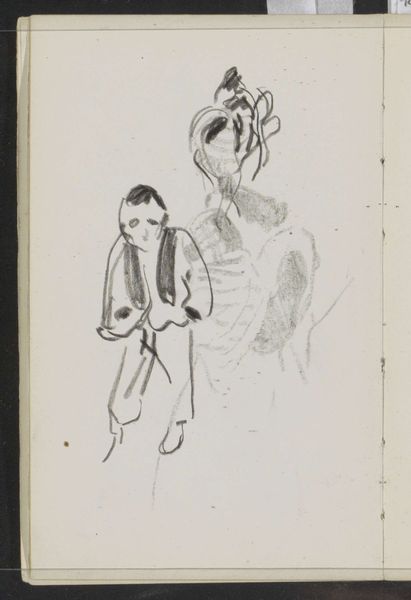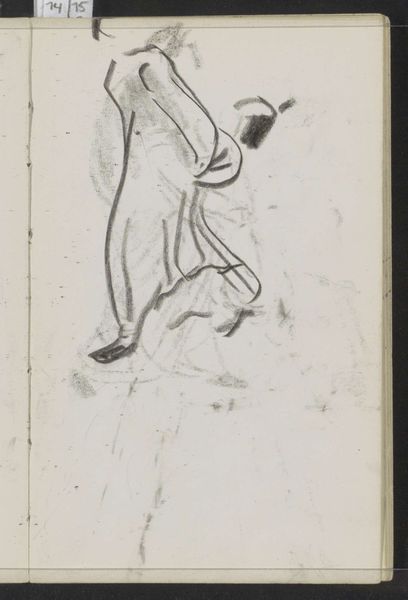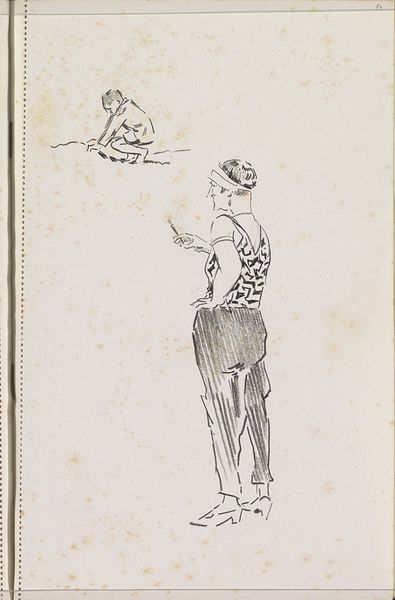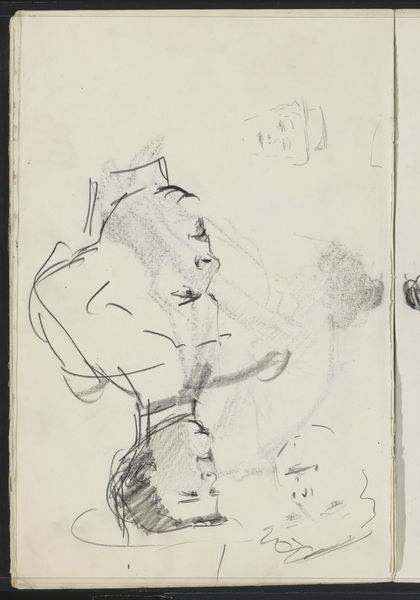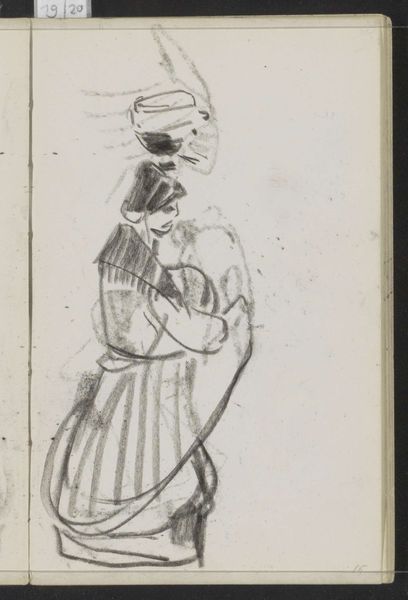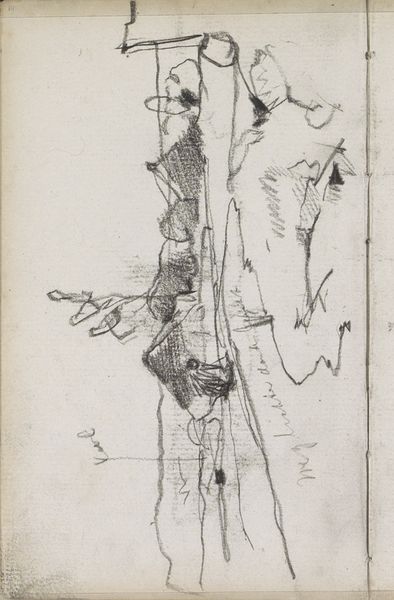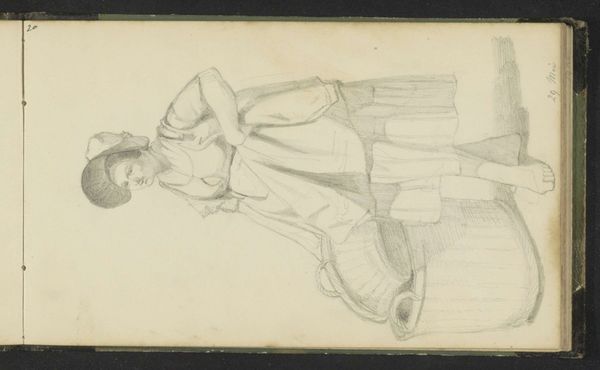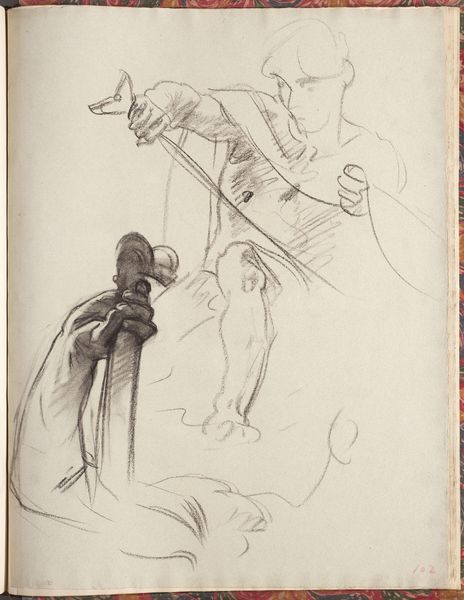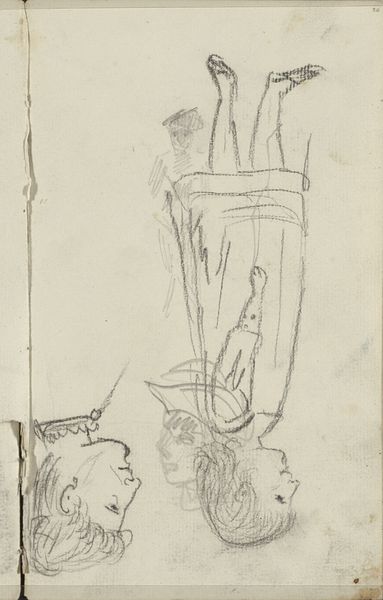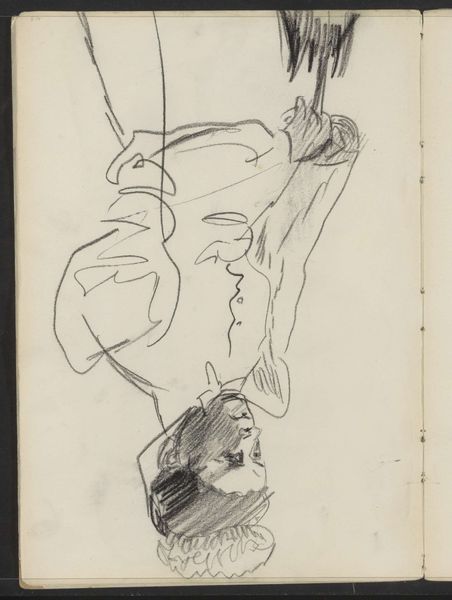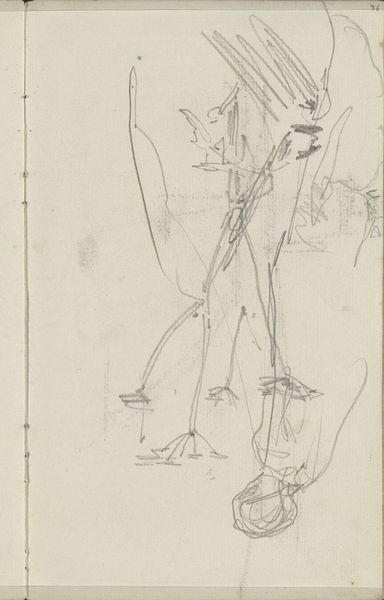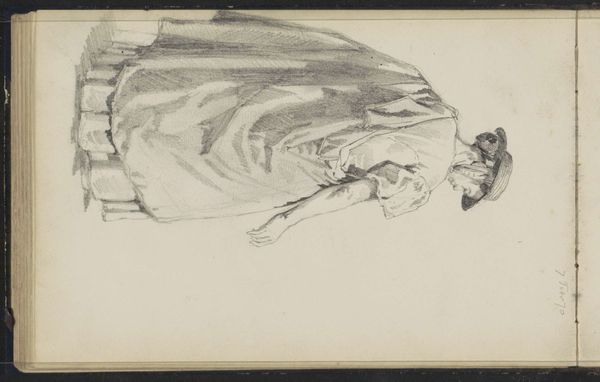
drawing, pencil
#
portrait
#
drawing
#
imaginative character sketch
#
quirky sketch
#
figuration
#
personal sketchbook
#
idea generation sketch
#
sketchwork
#
character sketch
#
ink drawing experimentation
#
intimism
#
pencil
#
sketchbook drawing
#
storyboard and sketchbook work
#
sketchbook art
Copyright: Rijks Museum: Open Domain
Editor: Here we have Carel Adolph Lion Cachet’s “Figuurstudie,” a drawing created sometime between 1874 and 1945. It has the appearance of a quick sketch, focusing on two figures. The mood is rather subdued, almost secretive. What draws your eye in this piece? Curator: It's the enduring power of implied narrative, isn't it? Look at how Cachet uses minimal lines to suggest character. The woman in the foreground, partially obscured, yet dominating the composition – what stories does her stance evoke? Who do we imagine her to be? Her clothes immediately made me think of older archetypes like Victorian England. Do you think Cachet has cleverly used the figure in the background to elicit those reactions? Editor: I hadn't considered the specific era, but now I see it! The other figure is less defined, almost ghostly. Is this contrast intentional, do you think? Curator: I suspect it’s a device for guiding our focus. The sharper lines denote a psychological weight on the foreground figure, creating an atmosphere, but one dependent on the other. Both are locked within that sketchbook page - where every line holds potential and history. Have you considered the possible social connection between the two? Mother and son? Or is she someone waiting on the seated man. The lack of resolution invites an engagement with visual storytelling. Editor: That's a great point. It feels like Cachet provides just enough information for our minds to fill in the gaps and it invites you to dream up your own theories as to the relationship between these figures. Curator: Precisely. It prompts us to project our own experiences and understanding of visual shorthand onto it, doesn't it? Consider what this means – how does the cultural memory shape what is shown on display in order to engage modern audiences. What if we saw this same picture one-hundred years ago. Editor: This piece reveals how much we bring to the act of viewing. I came in with very little knowledge, but through conversation, I am able to understand this in a new context! Curator: I, too, enjoyed our little excavation! It’s fascinating to see how a simple sketch can be so layered, reflecting the artist’s and the viewer's world.
Comments
No comments
Be the first to comment and join the conversation on the ultimate creative platform.
